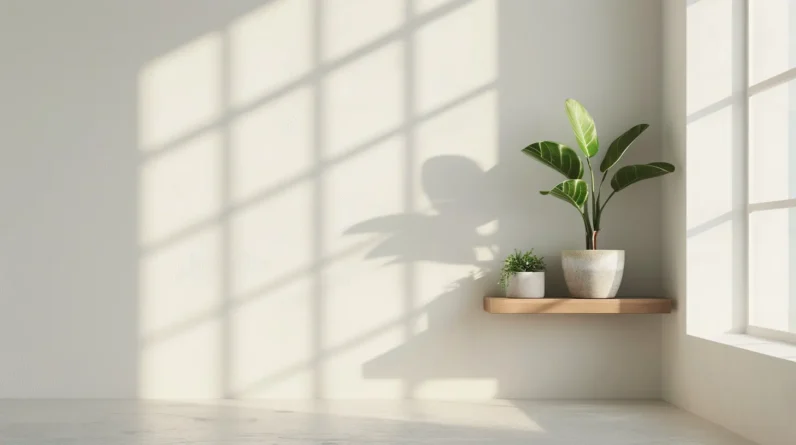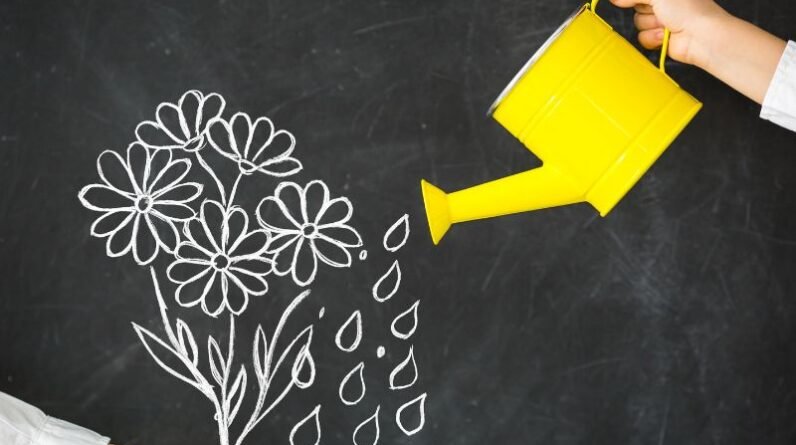
In a cluttered room, much like a cluttered mind, finding what you truly need can feel like searching for a needle in a haystack. We’ve all experienced the frustration of misplaced keys or forgotten appointments, a direct result of the chaos that surrounds us. But what if I told you that by simplifying our physical spaces, we can also declutter our minds and pave the way for personal growth? The concept of minimalism is not just about tidying up; it’s a transformative journey towards clarity and purpose.
The Benefits of Minimalism
Embracing minimalism has transformed our lives by bringing clarity, reducing stress, and increasing our overall sense of well-being. By simplifying our surroundings and focusing on what truly matters, we’ve unlocked a profound sense of clarity. Minimalism has allowed us to prioritize our goals, enabling us to allocate our time and energy more efficiently. With fewer distractions, we can concentrate on personal growth and development. The reduction of clutter in our physical and mental spaces has significantly lowered our stress levels. We now navigate our daily lives with a newfound sense of calm and purpose. This intentional way of living has uplifted our spirits, leading to a more profound sense of contentment and well-being.
We think that minimalism has the power to create a positive impact on anyone’s life. Based on our analysis, it helps individuals gain a clearer understanding of their priorities and values. In our view, it allows for a more intentional and focused approach to life. We’re convinced that by embracing minimalism, individuals can experience a greater sense of fulfillment and satisfaction.
Clearing Physical Clutter
Having experienced the transformative power of minimalism in decluttering our minds and spaces, we now turn our focus to clearing physical clutter to enhance our sense of clarity and well-being. Here are four key steps to effectively clear physical clutter:
1. Assess Each Area: Start by evaluating each room or space to identify items that no longer serve a purpose.
2. Create Sorting Categories: Divide items into categories like keep, donate, recycle, or discard to streamline the decluttering process.
3. Implement the One In, One Out Rule: For every new item brought in, remove an old one to maintain a clutter-free environment.
4. Establish a Regular Decluttering Routine: Set aside time weekly or monthly to declutter and prevent the accumulation of unnecessary items.
We believe that following these steps will result in a more organized and peaceful living environment. Based on our analysis, incorporating these practices into your life can lead to a sense of control and reduce stress.
We’re confident that taking the time to assess and declutter your physical space will positively impact your overall well-being.
Simplifying Daily Routines
To simplify daily routines effectively, it’s essential to identify and prioritize tasks that bring the most value and streamline processes for increased efficiency. Begin by creating a list of your daily responsibilities and tasks. Analyze each item to determine its importance and impact on your overall goals.
Next, categorize these tasks based on urgency and importance. Implement time-blocking techniques to allocate specific time slots for different activities, ensuring focus and productivity.
Simplify your morning by laying out clothes and preparing breakfast the night before. Utilize technology tools like calendar apps to set reminders and stay organized. Delegate tasks when possible to free up time for essential activities.
Letting Go of Emotional Baggage
Letting go of emotional baggage can be a liberating experience that lightens our mental load and paves the way for personal growth. It involves acknowledging, processing, and releasing pent-up emotions that weigh us down.
Here are four practical steps to help you start this process:
1. Identify Triggers: Recognize what situations or people trigger negative emotions within you. We believe that understanding your triggers is crucial in order to address and overcome them effectively.
2. Practice Self-Reflection: Set aside time to reflect on past experiences and how they may be impacting your present emotions. Based on our analysis, self-reflection allows you to gain insight into the root causes of your emotional baggage and develop strategies to release it.
3. Seek Support: Don’t hesitate to seek guidance from a therapist, counselor, or trusted friend to help you navigate your emotions. We see the value in seeking support from others who can provide an objective perspective and offer tools and techniques to facilitate the letting go process.
4. Embrace Forgiveness: Forgive yourself and others for past hurts to free yourself from the burden of resentment. We’re convinced that practicing forgiveness is essential for releasing emotional baggage and promoting healing and growth.
Creating Mental Space
Creating mental space involves decluttering our minds from unnecessary thoughts and distractions to foster clarity and focus in our daily lives.
To achieve this, we must prioritize tasks, set boundaries, and practice mindfulness. Start by identifying tasks that truly matter and allocate time accordingly. Setting boundaries means learning to say no to commitments that don’t align with our goals.
We believe that incorporating mindfulness techniques such as meditation or deep breathing exercises can help us stay present and reduce mental clutter. Implementing these strategies consistently will train our minds to filter out irrelevant information, leading to increased productivity and improved decision-making.
Cultivating Gratitude and Mindfulness
Cultivating gratitude and mindfulness starts with appreciating the present moment and acknowledging the blessings in our lives. It’s essential to focus on the positive aspects of our daily experiences to foster a mindset of gratitude and mindfulness.
Here are four key practices to help you cultivate these qualities:
1. Daily Reflection: Take time each day to reflect on things you’re grateful for. This practice helps us to shift our attention away from negativity and towards the positive aspects of our lives. By consciously directing our thoughts towards gratitude, we can train our minds to develop a more positive outlook.
2. Mindful Breathing: Practice deep breathing exercises to center yourself in the present moment. By focusing on the sensations of your breath, you can anchor yourself in the present and let go of distracting thoughts. This simple yet powerful practice can help to reduce stress and increase your overall sense of well-being.
3. Gratitude Journal: Keep a journal to jot down things that bring you joy and gratitude. By regularly recording these positive experiences, you can train your mind to notice and appreciate the small blessings in life. This practice also serves as a helpful reminder during challenging times, as you can look back on your entries and be reminded of the good things in your life.
4. Mindful Eating: Pay attention to the textures, flavors, and sensations while eating to practice mindfulness. By savoring each bite and fully engaging your senses, you can enhance your enjoyment of food and cultivate a greater appreciation for the nourishment it provides. This practice also helps to develop a healthier relationship with food, as you become more attuned to your body’s hunger and fullness cues.
Embracing Minimalist Design Principles
To extend the practice of gratitude and mindfulness into our physical surroundings, we now turn our focus to embracing minimalist design principles. Minimalist design aims to create spaces that are clean, organized, and free of excess clutter.
Start by decluttering your living areas, keeping only items that serve a purpose or bring you joy. Utilize simple color palettes and clean lines to create a sense of calm and order. Invest in multifunctional furniture to maximize space efficiency. Incorporate natural elements like plants or wood to add warmth and texture to your space.
Building Sustainable Habits
Let’s establish sustainable habits to support a lifestyle of mindfulness and conservation. Sustainable habits are crucial in maintaining a minimalist lifestyle and fostering personal growth.
Here are four key practices to help you build sustainable habits:
1. Mindful Consumption: Evaluate your needs before making a purchase to avoid unnecessary clutter and waste. We believe that by practicing mindful consumption, we can make more informed choices and reduce our environmental footprint.
2. Daily Decluttering Routine: Dedicate a few minutes each day to decluttering and organizing your space to prevent accumulation of unnecessary items. Based on our analysis, incorporating a daily decluttering routine not only helps to maintain an organized living space but also promotes a sense of calm and clarity in our daily lives.
3. Reduce, Reuse, Recycle: Prioritize reusing items, reducing waste, and recycling materials to minimize environmental impact. In our view, the integration of these practices is essential for creating a more sustainable future.
4. Routine Evaluation: Regularly assess your habits and routines to identify areas where you can make more sustainable choices and adjustments. We’re confident that by consistently evaluating our habits, we can make continuous improvements towards a more sustainable lifestyle.
Nurturing Personal Growth
As we focus on sustainable habits to maintain mindful living, nurturing personal growth becomes a natural progression in our minimalist journey.
Embracing personal growth involves continuous self-reflection, setting meaningful goals, and cultivating new skills. One effective way to nurture personal growth is by dedicating time for intentional learning and self-improvement. Reading books, attending workshops, or seeking mentorship can all contribute to our development.
Practicing gratitude and mindfulness can enhance self-awareness and emotional intelligence, nurturing a deeper understanding of ourselves and our aspirations. By prioritizing personal growth within our minimalist lifestyle, we not only declutter our physical spaces but also declutter our minds, paving the way for a more purposeful and fulfilling existence.
Conclusion
Embracing minimalism has allowed us to declutter not just our physical spaces, but our minds as well. By simplifying our daily routines, letting go of emotional baggage, and creating mental space, we’ve cultivated gratitude and mindfulness in our lives.
We believe that a cluttered space is a cluttered mind, so let’s continue to nurture personal growth through the power of minimalism. It’s time to clean house and make room for growth and positivity.






